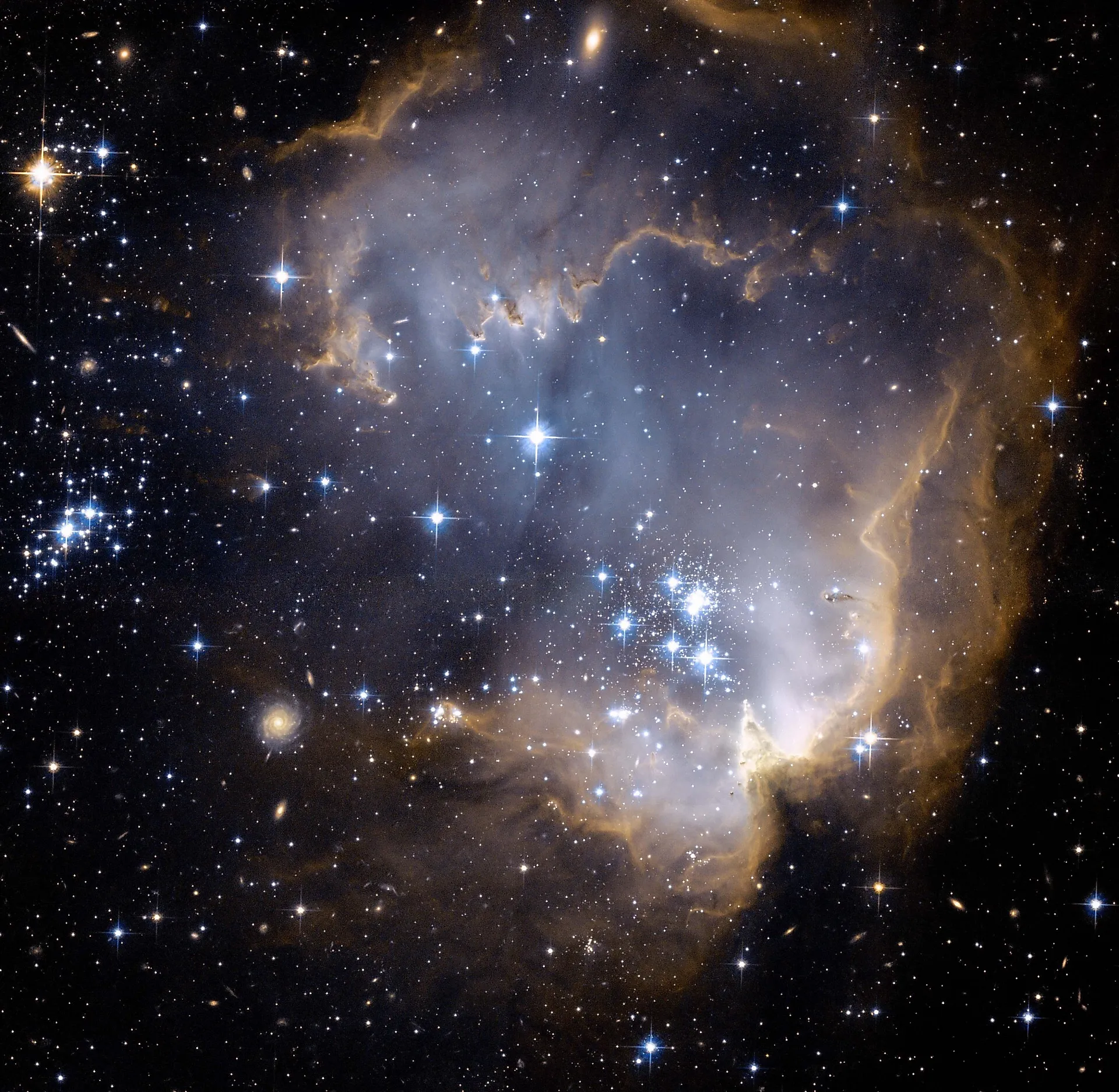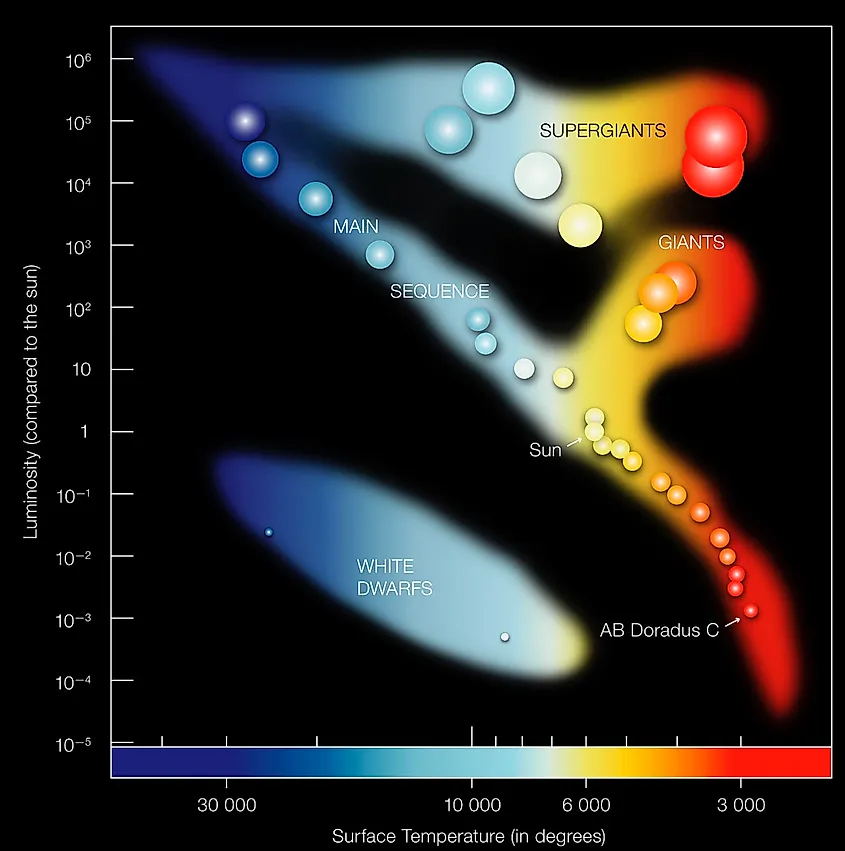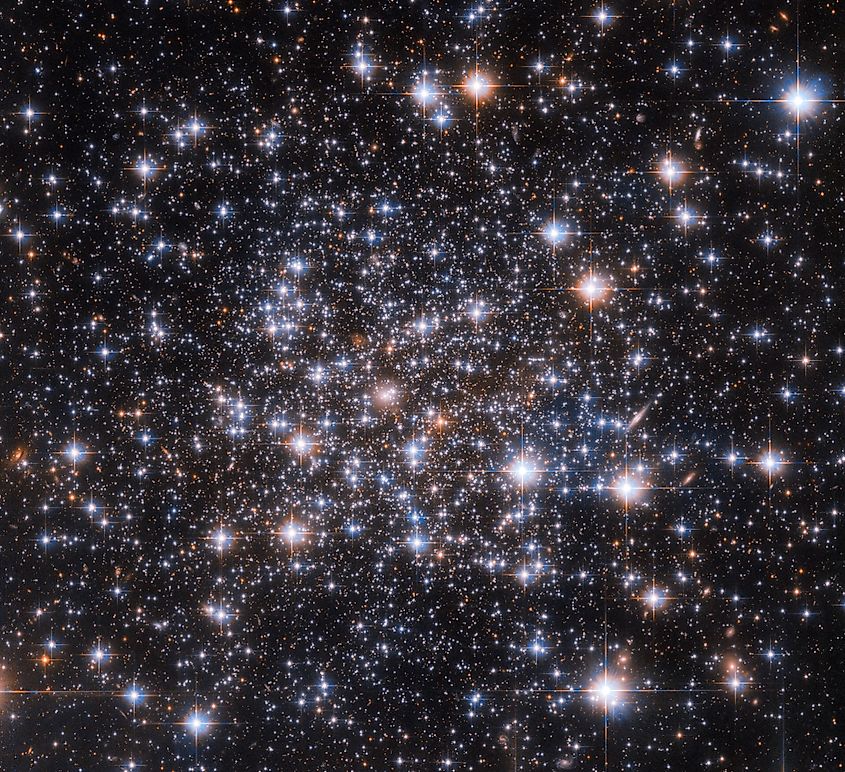
The Different Types Of Stars
When we look upon the stars from Earth, they all look the same. There are obvious differences in brightness, yet for the most part, the stars appear identical to each other. Despite appearances, the stars actually come in different types. Stars are classified based on their mass, temperature, and luminosity. Stars are classified using a letter system called the Morgan-Keegan system (MK system), which uses the following letters: O, B, A, F, G, K, M. O-stars are the most massive, hottest stars, while M-stars are the coldest, lowest mass stars. Each letter group is further divided into subgroups. For example, our sun is classified as a G2V-type star. The G represents the temperature of the sun, the 2 represents its temperature within the G classification, and the V represents its spectral type. Every type of star, from O-type to M-type, can be further divided into a number system from 0 to 9. Stars that have a zero after their letter are the hottest stars in that letter group, and stars with a nine after their letter are the coldest in that letter group.
Hertzsprung-Russell Diagram

Stars that actively fuse hydrogen into helium in their cores are called main sequence stars. When astronomers graph stars based on their luminosity and spectral type, it produces a nearly straight line through the graph. Most of the stars that we can see fall along this line. The line is the main sequence, and stars that fall in that line are main sequence stars. The graph itself is called a Hertzsprung-Russell Diagram, and by looking at it, you can determine where different types of stars fall along the main sequence. O-type stars exist in the upper-left corner of the diagram since they are the brightest, hottest stars. Meanwhile, M-type stars exist in the lower-right corner of the diagram since they are the coldest, dimmest stars.
Characteristics Of Different Stars

How long a star lives, its mass, temperature, and brightness are all a result of where it falls on the main sequence. O-type stars are the most massive, hottest stars in the universe, having surface temperatures that can exceed 30,000 degrees. O-type stars are generally more than 16 times the mass of the sun and can be many thousands of times larger in size. Interestingly, how common a star is increases as the mass of the star gets lower. O-type stars are the rarest types of stars in the universe, comprising a mere 0.00003% of all main sequence stars. Meanwhile, M-type stars comprise over 76% of all main sequence stars.
The color of a star is determined by where it falls on the mains sequence. The more massive a star is, the more blue it is. The lower a star's mass, the more red it is. The color itself is determined by the temperature of the star, which in turn is determined by how massive a star is. The more massive a star, the higher its temperature. Higher temperature means higher energy, and so the most massive stars emit high energy blue light. Low mass stars have less energy and will thus emit low energy red light.
How long a star exists for is also dependent upon where it falls along the main sequence. Although the largest stars contain far more hydrogen fuel than the smallest stars, their extreme temperatures also means that they burn through their fuel at an extraordinarily fast rate. The most massive O-type stars will generally exhaust their hydrogen fuel in only a few million years. Meanwhile, the smallest M-type stars can continue fusing hydrogen in the cores for many hundreds of billions of years. When high mass stars run out of fuel, they explode in a mighty supernova, leaving behind either a neutron star or black hole. Lower mass stars will expand and become red giant stars, eventually blowing off their outer layers and leaving behind a white dwarf surrounded by a planetary nebula.











